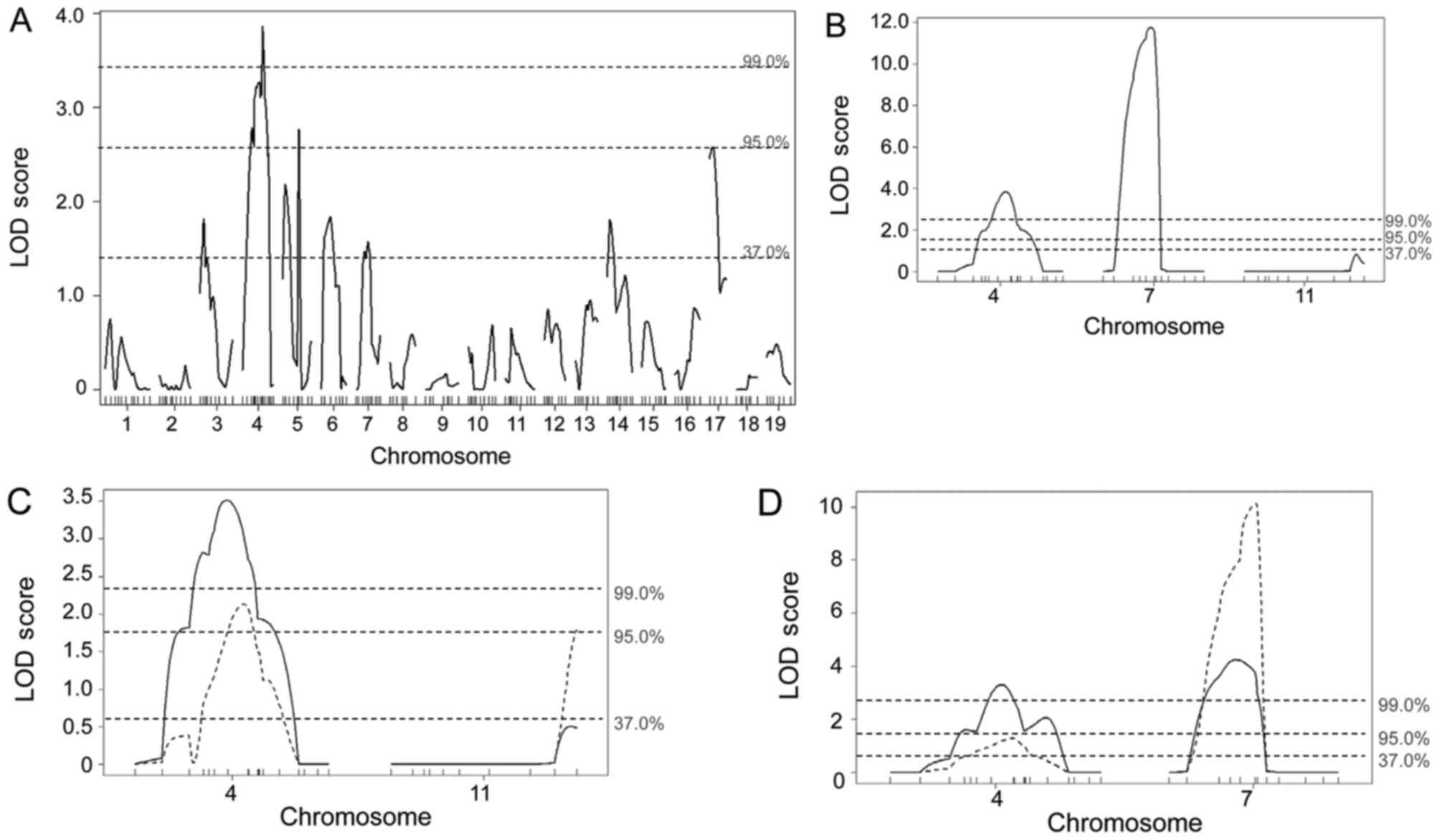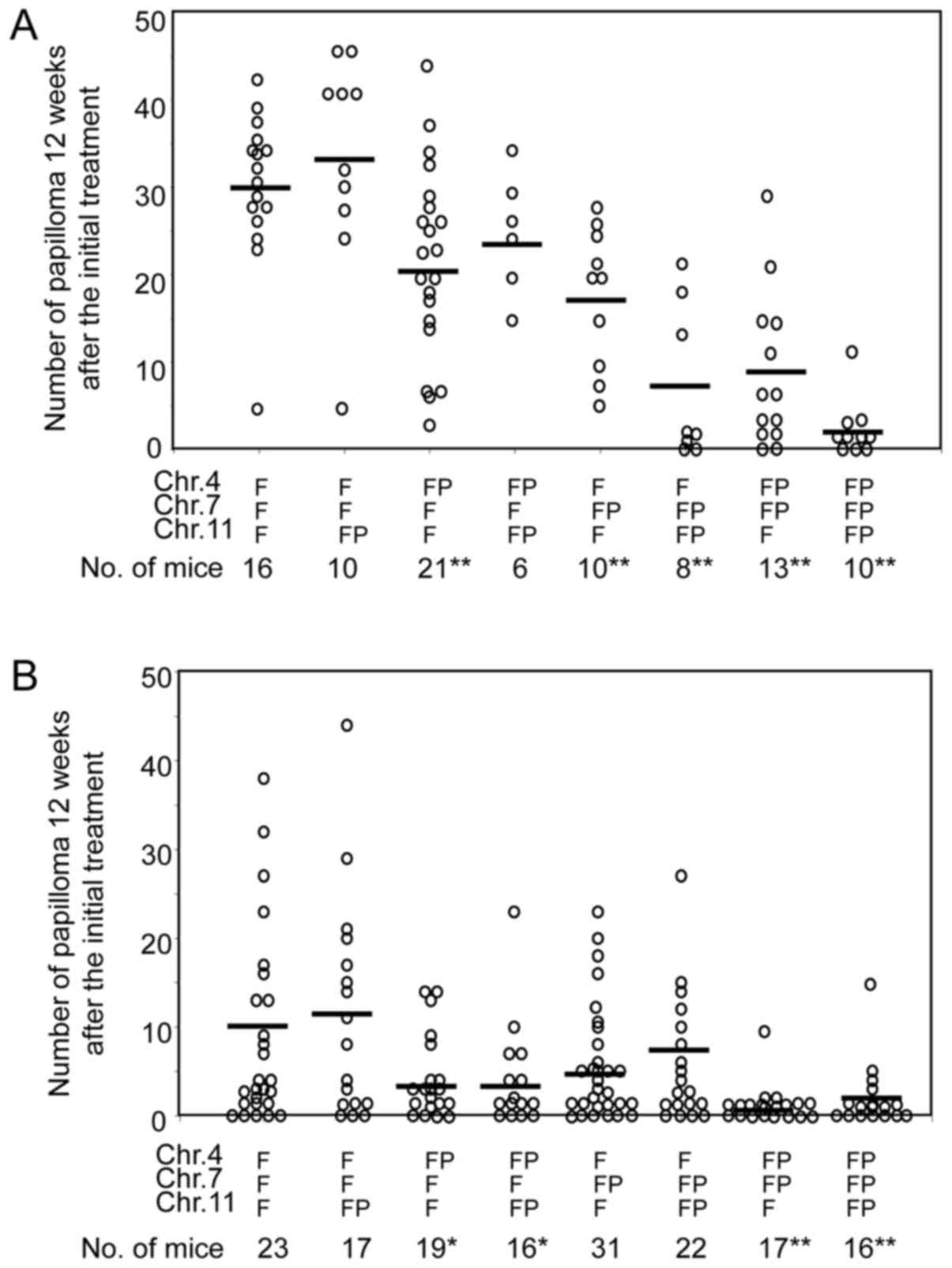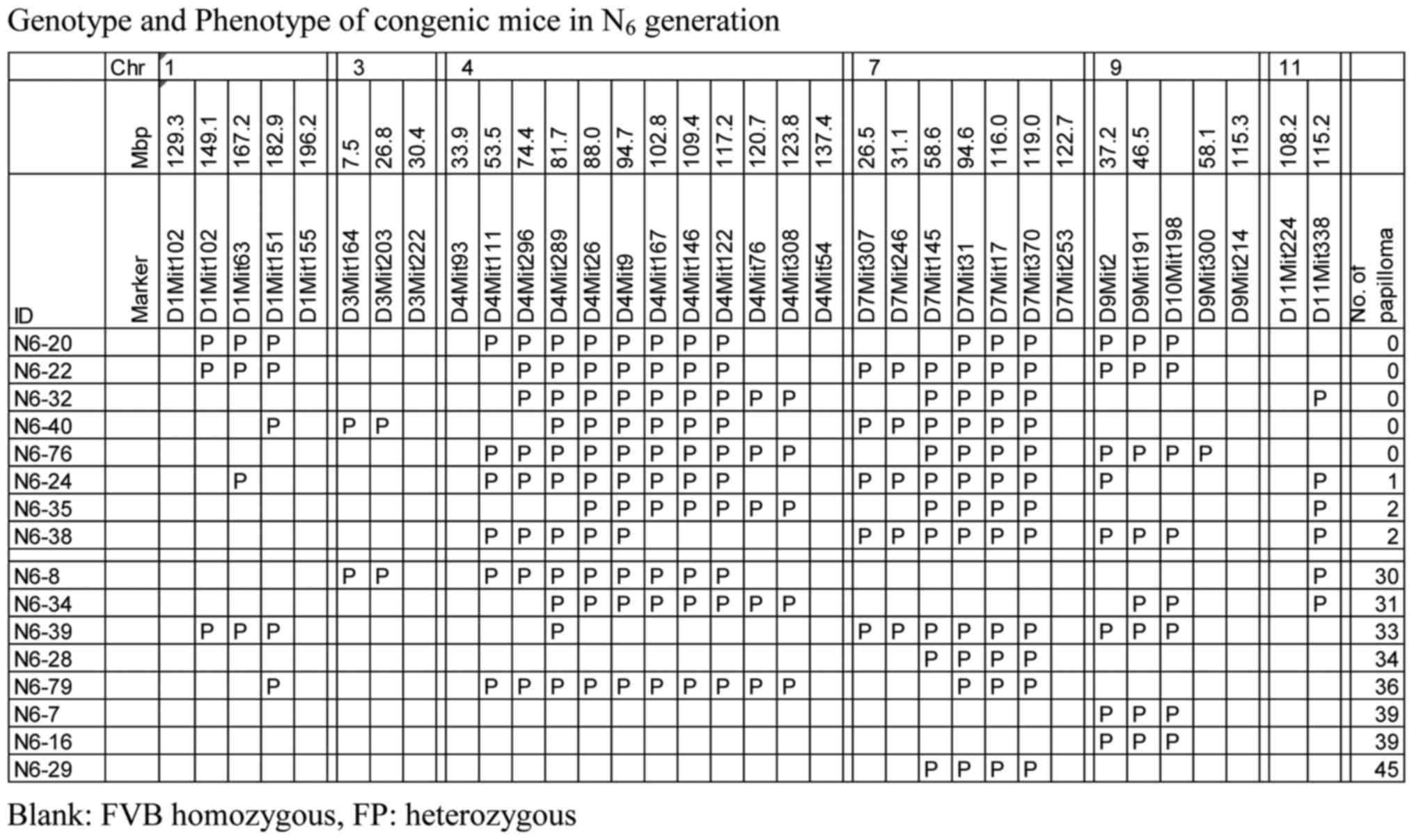|
1
|
Li FP: Identification and management of
inherited cancer susceptibility. Environ Health Perspect. 103 Suppl
8:S297–S300. 1995. View
Article : Google Scholar
|
|
2
|
Houlston RS and Peto J: The search for
low-penetrance cancer susceptibility alleles. Oncogene.
23:6471–6476. 2004. View Article : Google Scholar : PubMed/NCBI
|
|
3
|
Demant P: Cancer susceptibility in the
mouse: Genetics, biology and implications for human cancer. Nat Rev
Genet. 4:721–734. 2003. View
Article : Google Scholar : PubMed/NCBI
|
|
4
|
Mao JH and Balmain A: Genomic approaches
to identification of tumour-susceptibility genes using mouse
models. Curr Opin Genet Dev. 13:14–19. 2003. View Article : Google Scholar : PubMed/NCBI
|
|
5
|
Bangrazi C, Mouton D, Neveu T, Saran A,
Covelli V, Doria G and Biozzi G: Genetics of chemical
carcinogenesis. 1. Bidirectional selective breeding of susceptible
and resistant lines of mice to two-stage skin carcinogenesis.
Carcinogenesis. 11:1711–1719. 1990. View Article : Google Scholar : PubMed/NCBI
|
|
6
|
Ashman LK, Murray AW, Cook MG and
Kotlarski I: Two-stage skin carcinogenesis in sensitive and
resistant mouse strains. Carcinogenesis. 3:99–102. 1982. View Article : Google Scholar : PubMed/NCBI
|
|
7
|
Balmain A: Cancer as a complex genetic
trait: Tumor susceptibility in humans and mouse models. Cell.
108:145–152. 2002. View Article : Google Scholar : PubMed/NCBI
|
|
8
|
Fujiwara K, Igarashi J, Irahara N, Kimura
M and Nagase H: New chemically induced skin tumour susceptibility
loci identified in a mouse backcross between FVB and dominant
resistant PWK. BMC Genet. 8:392007. View Article : Google Scholar : PubMed/NCBI
|
|
9
|
de Koning JP, Wakabayashi Y, Nagase H, Mao
JH and Balmain A: Convergence of congenic mapping and
allele-specific alterations in tumors for the resolution of the
Skts1 skin tumor susceptibility locus. Oncogene. 26:4171–4178.
2007. View Article : Google Scholar : PubMed/NCBI
|
|
10
|
Fujiwara K, Wie B, Elliott R and Nagase H:
New outbred colony derived from Mus musculus castaneus to identify
skin tumor susceptibility loci. Mol Carcinog. 49:653–661.
2010.PubMed/NCBI
|
|
11
|
Okumura K, Sato M, Saito M, Miura I,
Wakana S, Mao JH, Miyasaka Y, Kominami R and Wakabayashi Y:
Independent genetic control of early and late stages of chemically
induced skin tumors in a cross of a Japanese wild-derived inbred
mouse strain, MSM/Ms. Carcinogenesis. 33:2260–2268. 2012.
View Article : Google Scholar : PubMed/NCBI
|
|
12
|
Nagase H, Bryson S, Cordell H, Kemp CJ,
Fee F and Balmain A: Distinct genetic loci control development of
benign and malignant skin tumours in mice. Nat Genet. 10:424–429.
1995. View Article : Google Scholar : PubMed/NCBI
|
|
13
|
Nagase H, Mao JH and Balmain A: A subset
of skin tumor modifier loci determines survival time of
tumor-bearing mice. Proc Natl Acad Sci USA. 96:15032–15037. 1999.
View Article : Google Scholar : PubMed/NCBI
|
|
14
|
Angel JM, Beltrán L, Minda K, Rupp T and
DiGiovanni J: Association of a murine chromosome 9 locus (Psl1)
with susceptibility to mouse skin tumor promotion by
12-O-tetradecanoylphorbol-13-acetate. Mol Carcinog. 20:162–167.
1997. View Article : Google Scholar : PubMed/NCBI
|
|
15
|
Angel JM, Caballero M and DiGiovanni J:
Identification of novel genetic loci contributing to
12-O-tetradecanoylphorbol-13-acetate skin tumor promotion
susceptibility in DBA/2 and C57BL/6 mice. Cancer Res. 63:2747–2751.
2003.PubMed/NCBI
|
|
16
|
Ewart-Toland A, Briassouli P, de Koning
JP, Mao JH, Yuan J, Chan F, MacCarthy-Morrogh L, Ponder BA, Nagase
H, Burn J, et al: Identification of Stk6/STK15 as a candidate
low-penetrance tumor-susceptibility gene in mouse and human. Nat
Genet. 34:403–412. 2003. View
Article : Google Scholar : PubMed/NCBI
|
|
17
|
Mao JH, Saunier EF, de Koning JP, McKinnon
MM, Higgins MN, Nicklas K, Yang HT, Balmain A and Akhurst RJ:
Genetic variants of Tgfb1 act as context-dependent modifiers of
mouse skin tumor susceptibility. Proc Natl Acad Sci USA.
103:8125–8130. 2006. View Article : Google Scholar : PubMed/NCBI
|
|
18
|
Okumura K, Saito M, Yoshizawa Y, Munakata
H, Isogai E, Miura I, Wakana S, Yamaguchi M, Shitara H, Taya C, et
al: The parathyroid hormone regulates skin tumour susceptibility in
mice. Sci Rep. 7:112082017. View Article : Google Scholar : PubMed/NCBI
|
|
19
|
Rasband WS and Image J: U. S. National
institutes of health; bethesda, maryland, USA: https://imagej.nih.gov/ij/1997–2016
|
|
20
|
Nagase H, Mao JH and Balmain A:
Allele-specific Hras mutations and genetic alterations at tumor
susceptibility loci in skin carcinomas from interspecific hybrid
mice. Cancer Res. 63:4849–4853. 2003.PubMed/NCBI
|
|
21
|
Saito M, Okumura K, Miura I, Wakana S,
Kominami R and Wakabayashi Y: Identification of Stmm3 locus
conferring resistance to late-stage chemically induced skin
papillomas on mouse chromosome 4 by congenic mapping and
allele-specific alteration analysis. Exp Anim. 63:339–348. 2014.
View Article : Google Scholar : PubMed/NCBI
|

















